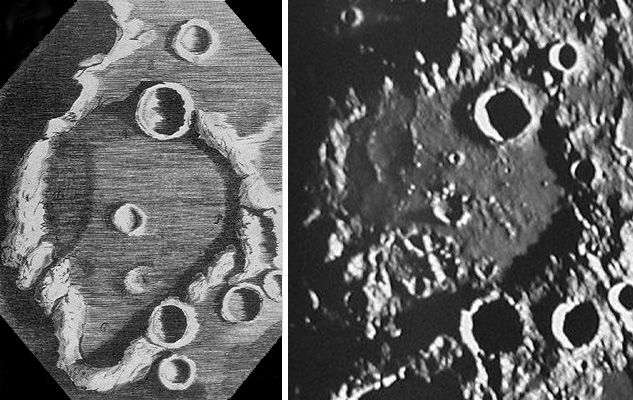Difference between revisions of "January 31, 2015"
(Created page with "__NOTOC__ =Hooke & Hipparchus= Originally published January 31, 2004 <table width="85%" border="0" align="center" cellpadding="6" cellspacing="2"> <tr> </tr> </table> <table...") |
|||
| (2 intermediate revisions by the same user not shown) | |||
| Line 33: | Line 33: | ||
<i>Ingenious Pursuits</i> by Lisa Jardine, p 63-65, Doubleday, New York, 1999.<br> | <i>Ingenious Pursuits</i> by Lisa Jardine, p 63-65, Doubleday, New York, 1999.<br> | ||
[http://www.roberthooke.org.uk/leonardo.htm England's Leonardo - Robert Hooke]</p> | [http://www.roberthooke.org.uk/leonardo.htm England's Leonardo - Robert Hooke]</p> | ||
| − | <p | + | <p><b>Yesterday's LPOD:</b> [[January 30, 2015|Lake of Death]] </p> |
| + | <p><b>Tomorrow's LPOD:</b> [[February 1, 2015|Theophilus]] </p> | ||
</table> | </table> | ||
<!-- start bottom --> | <!-- start bottom --> | ||
| Line 43: | Line 44: | ||
<td><p align="center" class="main_titles"><b>Author & Editor:</b><br> | <td><p align="center" class="main_titles"><b>Author & Editor:</b><br> | ||
[mailto:tychocrater@yahoo.com Charles A. Wood]</p> | [mailto:tychocrater@yahoo.com Charles A. Wood]</p> | ||
| − | < | + | <!-- Cleanup of credits --> |
| − | + | <!-- Cleanup of credits --> | |
| − | < | + | <!-- Cleanup of credits --> |
| − | + | <!-- Cleanup of credits --> | |
| − | < | + | <!-- Cleanup of credits --> |
| − | + | <!-- Cleanup of credits --> | |
| + | <!-- Cleanup of credits --> | ||
</tr> | </tr> | ||
</table> | </table> | ||
| Line 54: | Line 56: | ||
<div align="center"></div> | <div align="center"></div> | ||
<p> </p> | <p> </p> | ||
| − | + | {{wiki/ArticleFooter}} | |
| − | |||
| − | |||
| − | |||
| − | |||
| − | |||
| − | |||
| − | |||
| − | |||
| − | |||
Latest revision as of 17:54, 1 February 2015
Hooke & Hipparchus
Originally published January 31, 2004
Image Credit: Ingenious Pursuits & Consolidated Lunar Atlas |
|
Hooke & Hipparchus The earliest drawings of the Moon were of the entire body. By 1665 Robert Hooke, the English rival of Isaac Newton, published (in his Micrographia) the first drawing of a single feature, and it was remarkably accurate. The comparison of Hooke's drawing of the 150 km wide crater Hipparchus with a modern photo taken with a 61" telescope (Consolidated Lunar Atlas sheet E10) shows that Hooke correctly drew many details including two mountainous ridges at the bottom left. Hooke also shows a shadowed arc on the left side of Hipparchus that represents part of a ghost crater and various small hills. Hooke make this drawing with a 30 ft focal length telescope but he never gave the diameter of its lens. He was a very keen-sighted observer, discovering that Jupiter rotates and discovering Syrtis Major on Mars. Hooke was one of the most versatile scientists of the 17th century - I eagerly await the new biography of him by the wonderful author Lisa Jardine. Related Links: Yesterday's LPOD: Lake of Death Tomorrow's LPOD: Theophilus |
Author & Editor: |
COMMENTS?
Register, Log in, and join in the comments.




